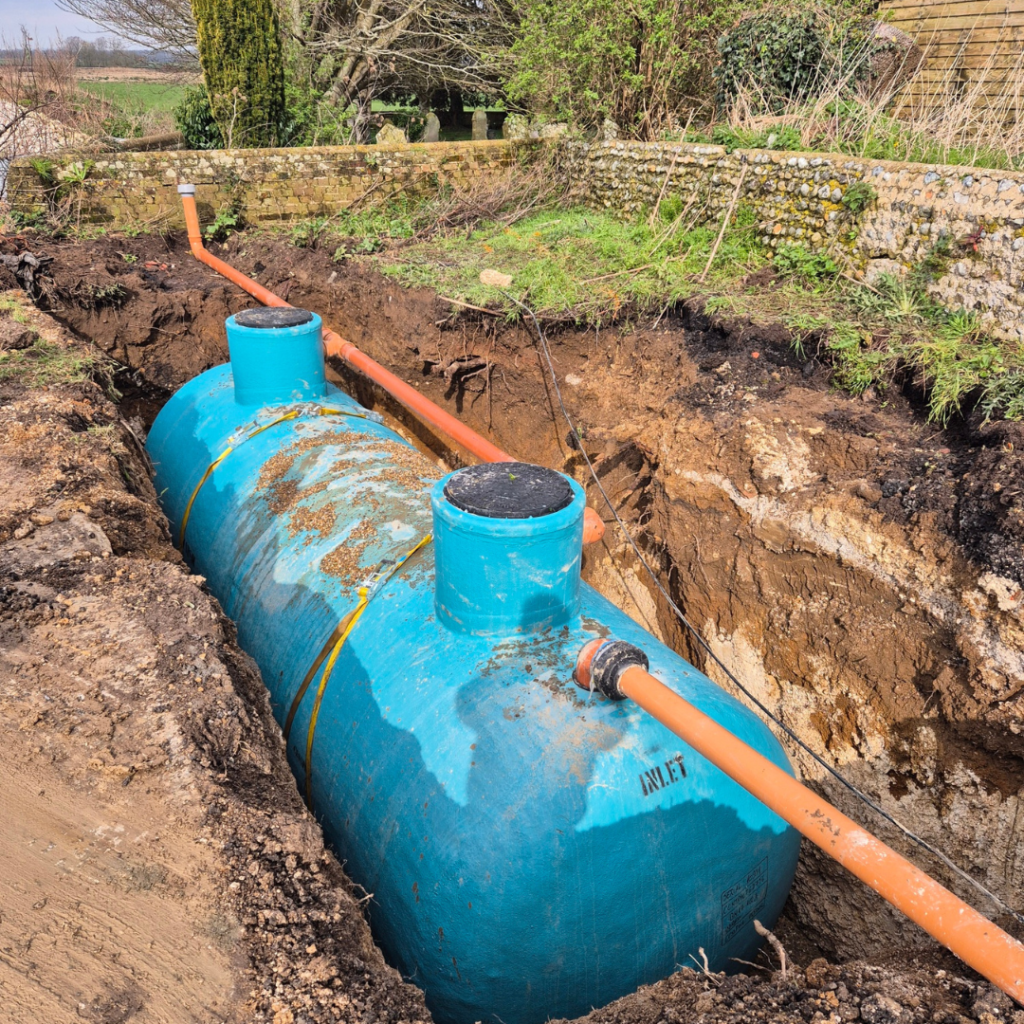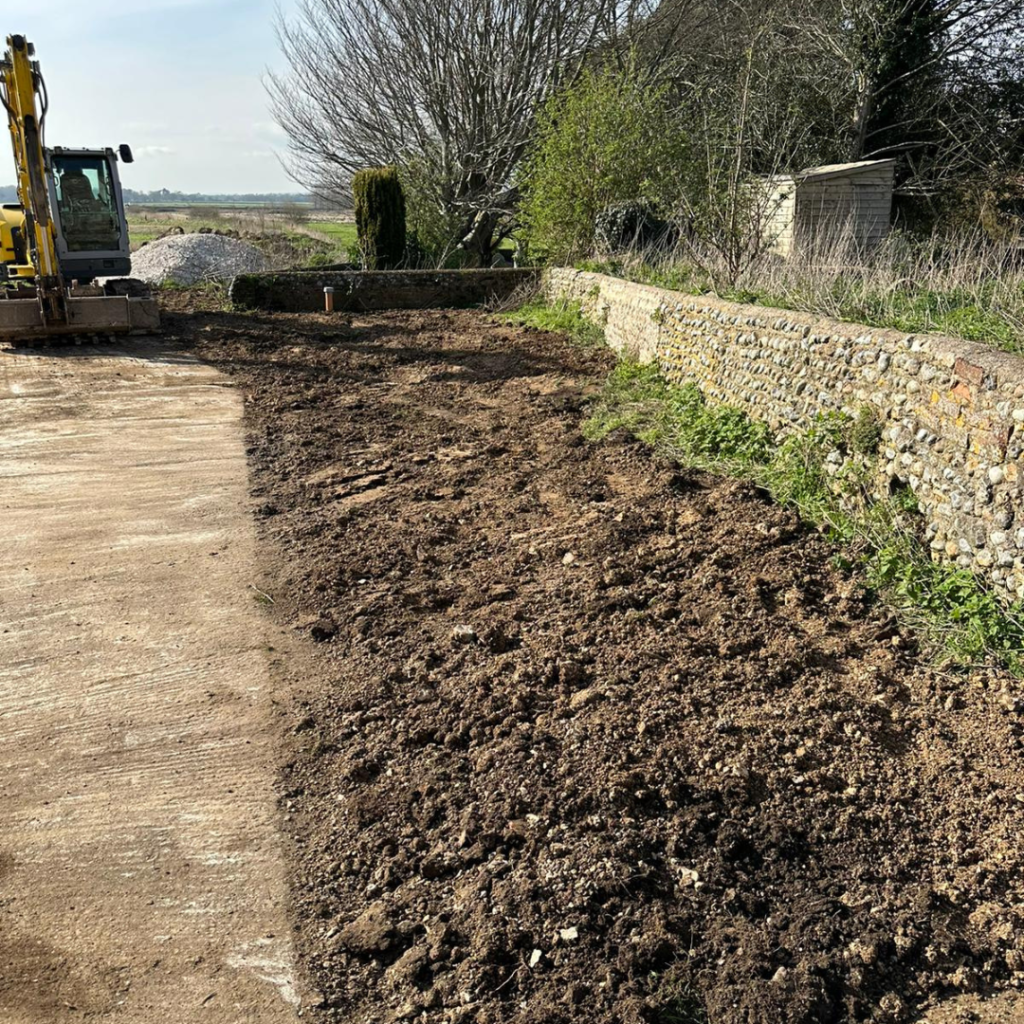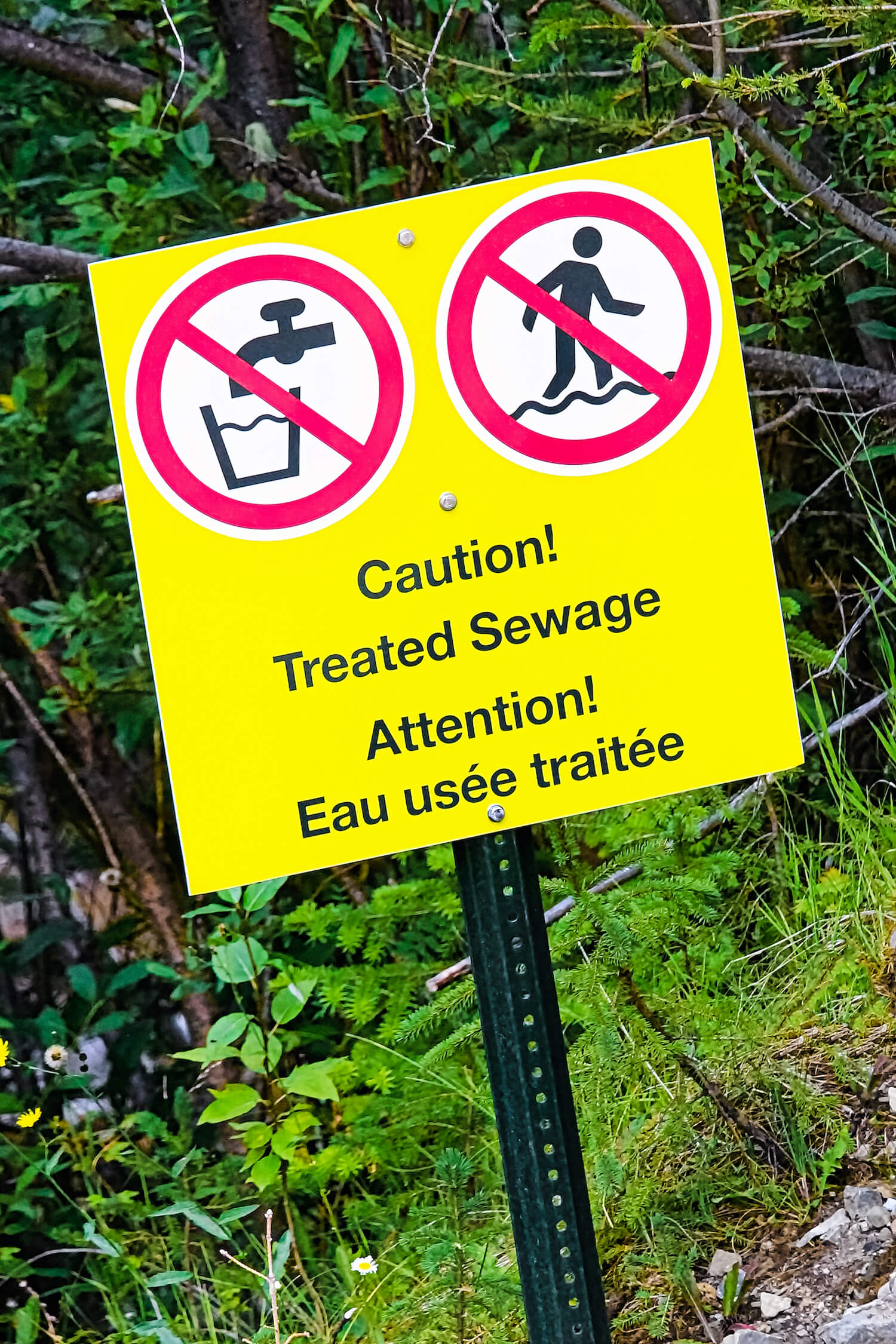Table of Contents
Septic tanks are a regular sight across households and businesses in the UK. They offer a practical and economical solution for properties not connected to the main sewage network. But what are they?
Septic tanks explained
The purpose of a septic tank is to treat wastewater on-site. It will collect the wastewater from your property, remove the wastewater pollutants, retain the solid materials and either return the treated ‘effluent’ to the nearby soil or environment, or push partially treated effluent downstream for further purification or disposal. Effluent is the term given to the liquid wastewater discharged.
Following septic tank installation, they work by collecting wastewater from a property’s toilets and drains. Domestic sewage is referred to as blackwater, whereas ‘greywater’ refers to wastewater from sources like a washing machine, bathtub and sink.
Some of the pollutants within the wastewater will be biologically treated by anaerobic organisms. The solids and scum will remain within the tank, which is why septic tanks need to be emptied regularly to remain functional. The ‘scum’ that accumulates in the septic tank consists mainly of fats, oils and grease.
Parts of a Septic Tank
Septic tanks have a handful of main parts, these being:
- The pipe that carries the wastewater from your property to the septic tank. Typically this pipe is made out of PVC plastic.
- The tank itself, typically made out of either concrete, polyethylene or fibreglass
- The pipe that connects the septic tank to the drainage field or secondary filter system
- The drainage field, explained in more detail below
- The septic tank vent that will allow gases to safely leave your septic tank. Gas will be generated by the bacteria within the septic tank as they break down the wastewater. Common gases created include hydrogen sulphide, which you will be able to identify easily thanks to the rotten egg smell! It is essential your septic tank vent is in working order to prevent a build-up of pressure within the tank that could prevent or in some cases even reverse the flow of wastewater.
- Septic tanks are installed with an access port, a covered opening at the top of the tank. This access port is used for septic tank emptying by experts such as ourselves.
- Some septic tanks are installed with effluent filters, placed before the outlet. This filter will stop fine particles and solids from clogging up the drainage field or secondary filter system.
Check our professional guide on how to install a septic tank.


Legislations surrounding Septic Tanks
On the 1st of January 2020, UK regulations changed surrounding the installation and use of septic tanks. These changes were introduced by the Environment Agency and set out that septic tanks could no longer discharge directly into surface water such as streams and rivers.
You can read one of our latest guides discussing how environmentally friendly septic tanks are.
The move was initiated due to the potential risk to public health of untreated wastewater entering into the environment, as well as the risk of degradation of the ecological quality.
The legislation stated that the end users of the drainage system were liable for their sewage system. Any septic tank that previously discharged into surface water would need to comply with any of the following:
- Replace the septic tank with a sewage treatment plant that complies with BS EN 12566-3
- If a permit is given, the effluent can be diverted to a drainage field, compliant with BS6297 2007
- The septic tank is connected up to the main sewage network
Drainage fields
Septic drain fields are used to remove contaminants and impurities from the effluent released by septic tanks. They are used alongside septic tanks as a way to treat wastewater. The role of the drainage system is to allow the effluent to dissipate back into the surrounding soil.
Drainage fields are typically created by digging a trench next to a septic tank, and then filled with shingle and gravel. This ensures that the wastewater does not flow directly into the water stream. Within the drainage field, the naturally aerated layers of soil will allow for further biological treatment of the wastewater.
Do you need planning permission for a septic tank drainage field in the UK?
You will need planning permission to add a drainage field to your property, as well as before adding a septic tank or sewage treatment plant to your home or business. Your septic tank would need to be at least five metres away from your property perimeter, as well as five metres away from trees and hedges.
Drainage fields must be located in areas with good drainage and an aerated area of subsoil to assist in the biological processing of the wastewater.
The 2020 Environmental Agency changes also stated that:
- New drainage fields must be more than 10 metres away from a watercourse
- More than 50 metres away from a water abstraction point
- More than 15 metres away from any building
- A permit from the EA is a prerequisite should the area be sensitive
Alternatives to a drainage field: Bio Filters
A passive secondary filter receives wastewater from the septic tank and will lower the concentration of organic matter using natural treatments. The treatment of the wastewater takes place in the filter, as opposed to in the drainage field. The treated effluent is then returned to the soil or a watercourse.
These types of secondary filters are ideal for properties that do not have the suitable space or facilities for a conventional drainage field. Local environmental regulations can be extremely strict, especially when it comes to wastewater treatment and management.
If you are looking to upgrade your septic tank, install a new one, or replace your septic tank with a sewage treatment plant, Peachy Services are here to help. We are based in Crawley but serve across the South East, including up to the River Thames in South London.



